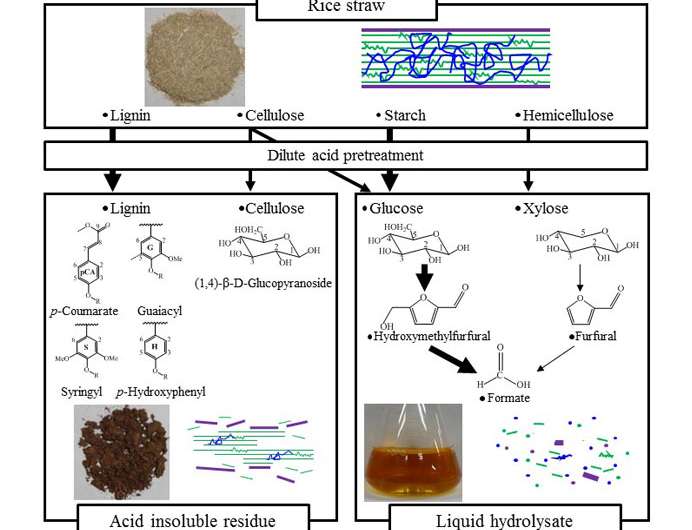Elucidation of chemical ingredients in rice straw

For the first time, researchers at Kobe University and RIKEN successfully elucidated the biochemical and biofuel-producing materials contained in rice straw. Future applications include using these materials in species of rice with high starch content, as well as reducing costs and increasing the efficiency of biochemical and biofuel production. The results of the study will be published in the American science journal PLOS ONE on June 17, 2015.
This joint study was conducted by KONDO Akihiko, Professor at the Graduate School of Engineering and member of the Network Project of Carbon Dioxide Resource Studies in Plants at Kobe University; OGINO Chiaki, Associate Professor at the Graduate School of Engineering; TERAMURA Hiroshi, Academic Researcher; SASAKI Kengo, Project Assistant Professor and member of Innovative BioProduction Kobe; YAMASAKI Masanori, Associate Professor at the Graduate School of Agricultural Science; SHIRAI Tomokazu, associate team leader and a member of the Cell Factory Research Team at the RIKEN Center for Sustainable Resource Science; and KIKUCHI Jun, team leader and a member of the Environmental Metabolic Analysis Research Team. The main conclusion of the study results were obtained by analyzing rice straws using the combined strengths and integrated technologies of each research organization, ultimately yielding an elucidation of the rice straws' chemical ingredients.
In order to produce chemicals and fuels such as bioethanol from biomass in rice and wheat, unnecessary components must be eliminated during preprocessing using diluted sulfuric acid, and the resulting sugars must be fermented by microorganisms. The research team focused on rice straws, the most abundant disposable biomass source in Japan. Thirteen species of rice straw maintained at the Graduate School of Agricultural Science at Kobe University were preprocessed using technologies developed over the course of bio refinery research spearheaded by the Graduate School of Engineering, which yielded 47 types of structural materials. Changes to these materials were analyzed at RIKEN using NMR techniques. In addition, the concentrations of sugars and acids obtained after preprocessing were analyzed and tested for correlations with the abundances of the 47 types of structural materials. The results demonstrated that after preprocessing, cellulose and glucose were contained in the solids and fluids, respectively, and that glucose levels were influenced by starch levels.
In this study, the chemical ingredients of rice straws were clarified for the first time via integrated analytical techniques that utilized the collection of rice species at the Graduate School of Agricultural Science at Kobe University, the bio refinery research of the Graduate School of Engineering, and NMR techniques at RIKEN. These results open the possibility for efficient production of biochemical and biofuels in the future.
Journal information: PLoS ONE
Provided by Kobe University




















